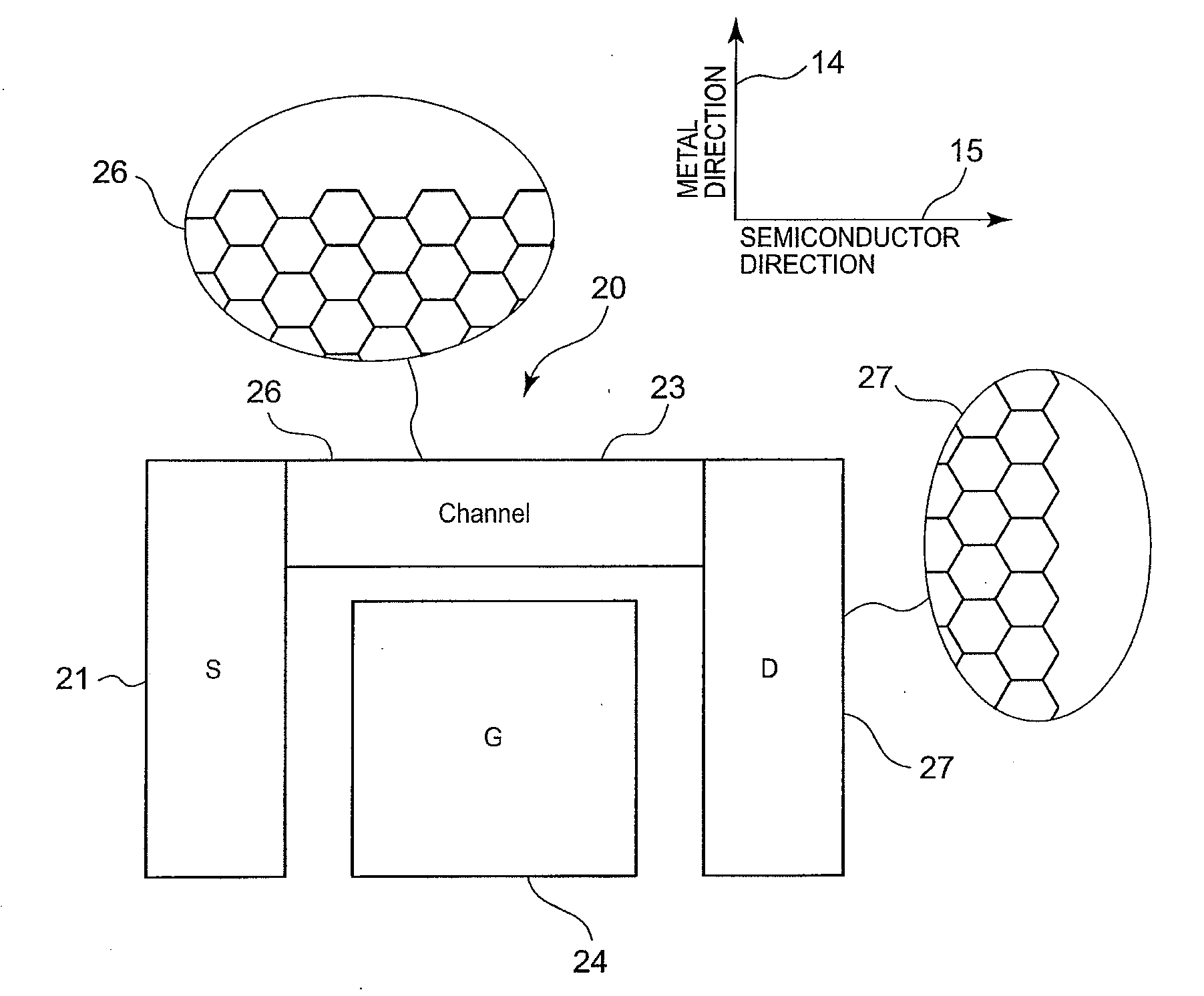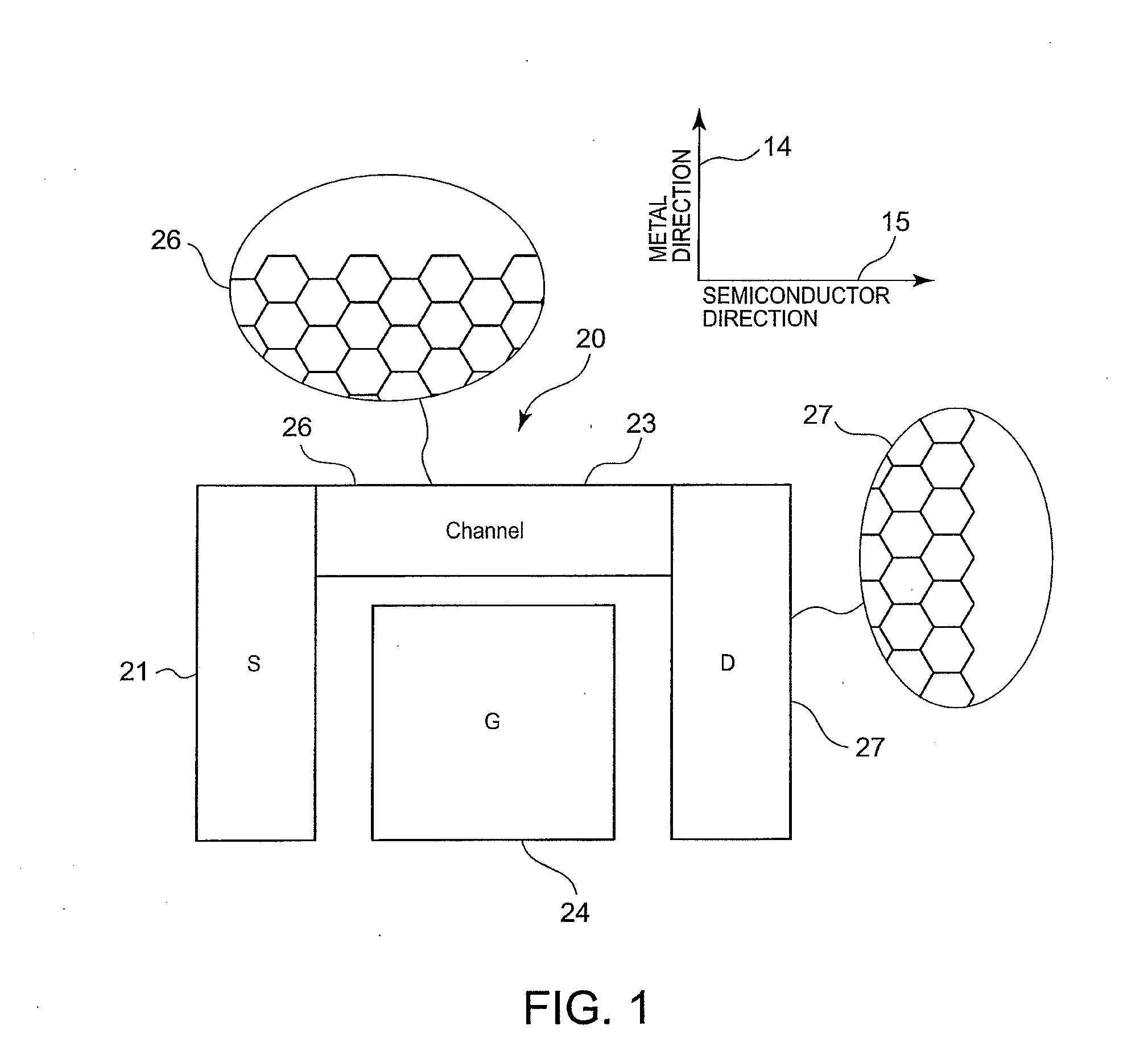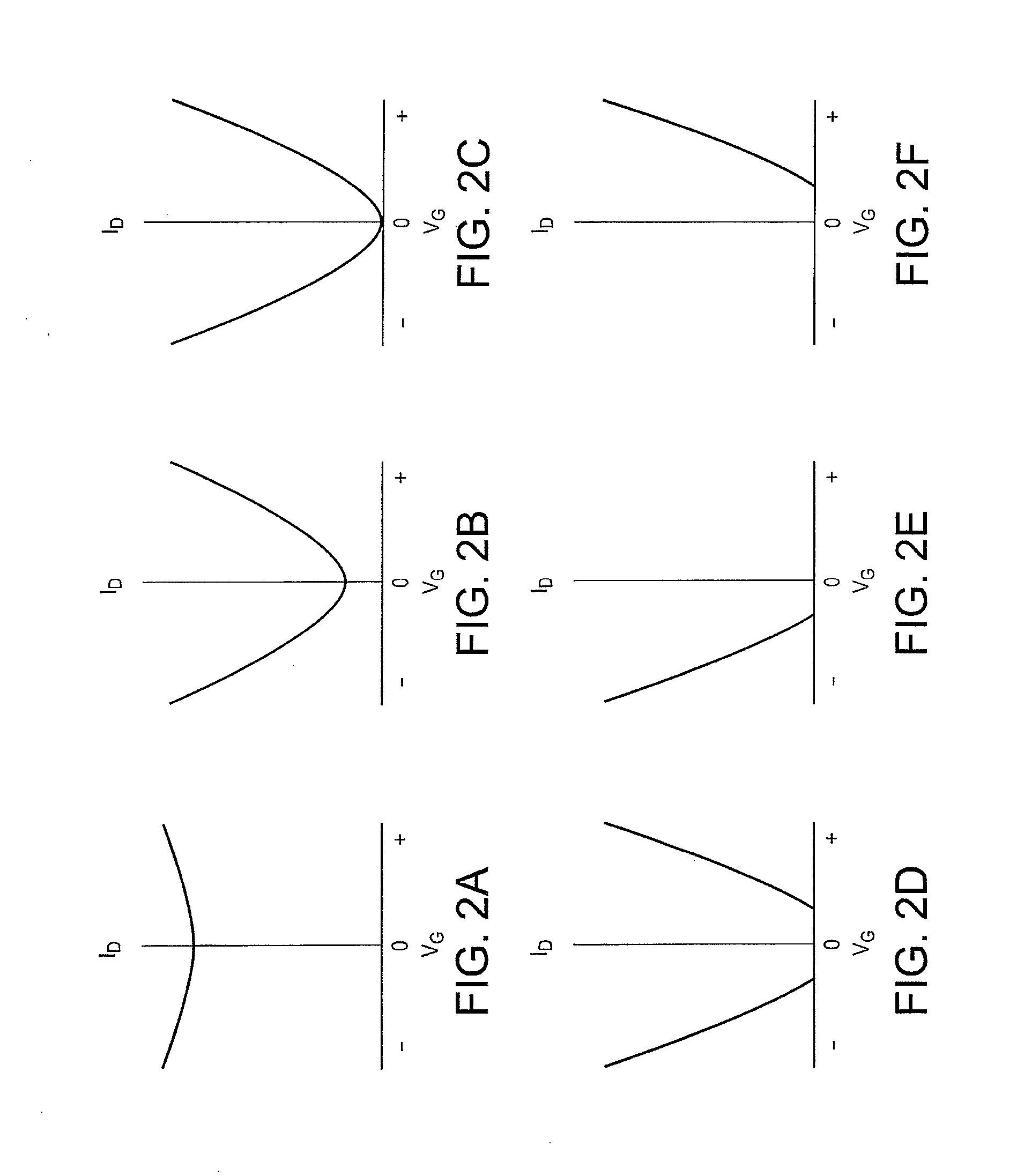Semiconductor device using graphene and method of manufacturing the same
a graphene and semiconductor technology, applied in semiconductor devices, digital storage, instruments, etc., can solve the problems of inability to produce, disadvantageous electric power consumption, poor on/off ratio, etc., and achieve low electric power consumption, high speed operation, and reduce material cost
- Summary
- Abstract
- Description
- Claims
- Application Information
AI Technical Summary
Benefits of technology
Problems solved by technology
Method used
Image
Examples
example 1
[0084]FIG. 6 is a diagram showing a full-graphene double-gate field-effect transistor produced by the manufacturing method shown in FIGS. 5A to 5D.
[0085]Referring to FIG. 6, a full-graphene double-gate field-effect transistor 20 has a structure including a source electrode 21 formed of metal graphene integrally with interconnections, a drain electrode 22 formed of metal graphene integrally with interconnections, a channel 23 formed so as to connect the source electrode 21 and the drain electrode 22 to each other, and two gate electrodes 24 and 25 opposed to each other so as to interpose the channel 23 therebetween. The advantages of this structure include the following two aspects.
[0086]One aspect is excellent gate controllability and readiness to establish an off state because electric fields from the two gate electrodes 24 and 25 can be applied symmetrically to the channel.
[0087]The other aspect is that, when the two gate electrodes 24 and 25 are designed asymmetrically in size, i...
example 2
[0088]FIGS. 7A to 7C are diagrams showing complementary inverters 30a, 30b, and 30c of a full-graphene device produced by the same manufacturing method as shown in FIGS. 5A to 5D. FIG. 7A shows an inverter in which p-type and n-type channels are controlled by two independent gate electrodes. FIG. 7B shows an inverter in which p-type and n-type channels are positioned on the same line and controlled by one gate electrode. FIG. 7C shows an inverter in which p-type and n-type channels are positioned in parallel to each other and controlled by one gate electrode.
[0089]Referring to the complementary inverter 30a in FIG. 7A, a p-type channel 31 and an n-type channel 32 are formed of semiconductor graphene, and electrodes such as gate electrodes 33, which also serve as interconnections, are formed of metal graphene. The reference numeral 34 denotes an output voltage Vout, the reference numeral 35 an input voltage Vin, the reference numeral 37 a power source voltage VDD, and the reference n...
example 3
[0098]FIGS. 8A to 8C are diagrams showing NOR gates 40a, 40b, and 40c of complementary inverters produced by the manufacturing method shown in FIGS. 5A to 5D.
[0099]In FIGS. 8A to 8C, the number of gate electrodes is two in the NOR gate 40a of FIG. 8A, four in the NOR gate 40b of FIG. 8B, and three in the NOR gate 40c of FIG. 8C. The reference numeral 41 denotes three equivalent directions of a semiconductor graphene, and the reference numeral 42 denotes three equivalent directions of a metal graphene. Those directions are common to FIGS. 8A, 8B, and 8C.
[0100]The NOR gate 40a shown in FIG. 8A has the smallest number of gate electrodes. Outputs (Vout) 34 should be drawn out of the plane through vias 38. The reference numerals 31a and 31b denote first and second p-type channels of semiconductor graphene, respectively, and the reference numerals 32a and 32b denote first and second n-type channels of semiconductor graphene, respectively. The reference numerals 33a and 33b denote first an...
PUM
| Property | Measurement | Unit |
|---|---|---|
| width | aaaaa | aaaaa |
| ionization energy | aaaaa | aaaaa |
| ionization energy | aaaaa | aaaaa |
Abstract
Description
Claims
Application Information
 Login to View More
Login to View More - R&D
- Intellectual Property
- Life Sciences
- Materials
- Tech Scout
- Unparalleled Data Quality
- Higher Quality Content
- 60% Fewer Hallucinations
Browse by: Latest US Patents, China's latest patents, Technical Efficacy Thesaurus, Application Domain, Technology Topic, Popular Technical Reports.
© 2025 PatSnap. All rights reserved.Legal|Privacy policy|Modern Slavery Act Transparency Statement|Sitemap|About US| Contact US: help@patsnap.com



